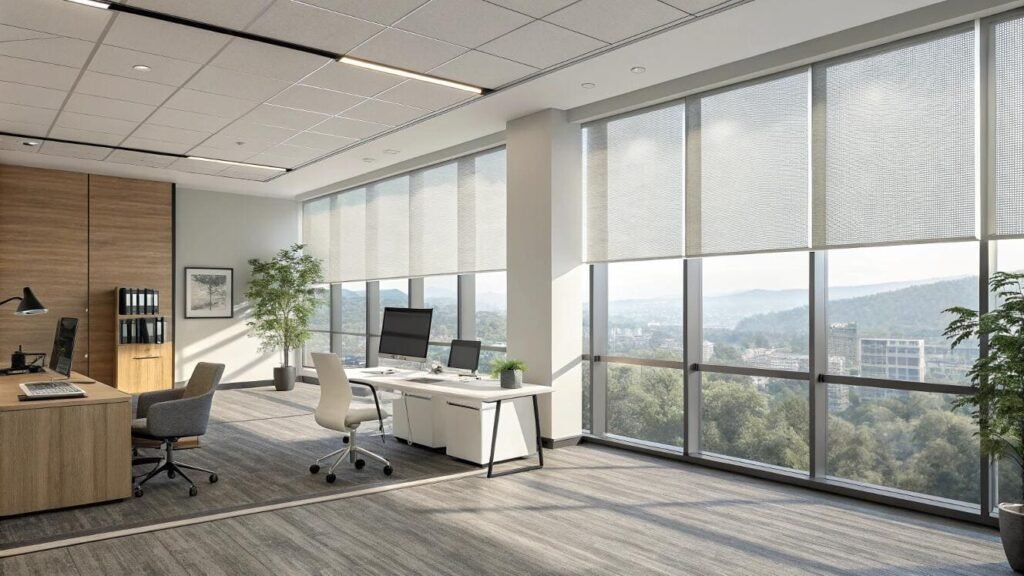Choosing the wrong solar shade can leave your client with frustrating glare or a completely blocked view. This mistake can ruin an otherwise perfect room design and create unnecessary problems.
The ideal openness for most homes and offices is 3% to 5%. This range offers the best balance of blocking glare and UV rays while still preserving a clear view outside.
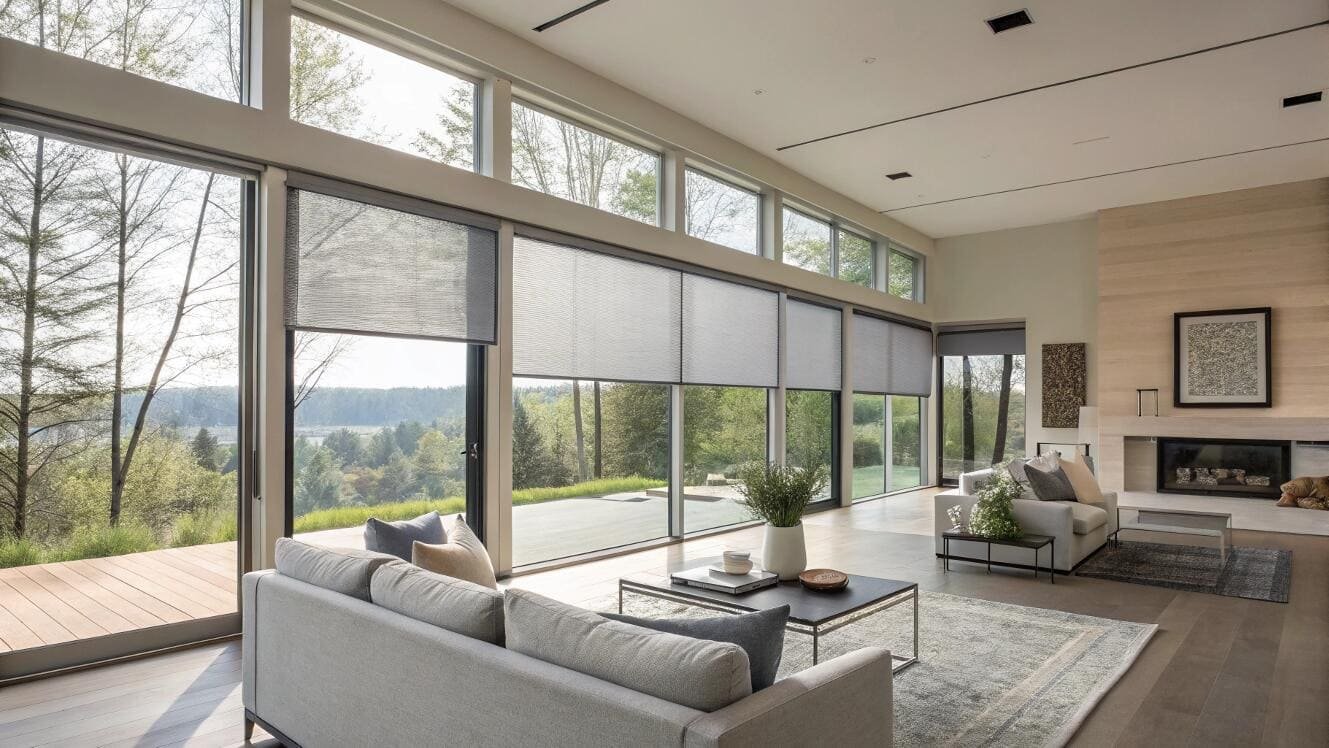
As a blinds supplier, I often talk to project designers like Emma who need to get this detail right. The "openness factor[^1]" is a simple percentage, but it's the most important factor in how a solar shade performs. It controls everything from glare reduction to privacy[^2] and energy efficiency[^3]. Getting it wrong leads to unhappy clients, but getting it right makes a space comfortable and functional. Let's walk through how to choose the perfect openness for any situation.
What does openness percentage mean in shades?
You see technical terms like "5% openness" on fabric samples. This number can be confusing, making it hard to know if you are choosing the right material for your project's needs.
Openness is simply the percentage of light that can pass through the fabric. A lower number means a tighter weave that blocks more light, while a higher number means a looser weave.
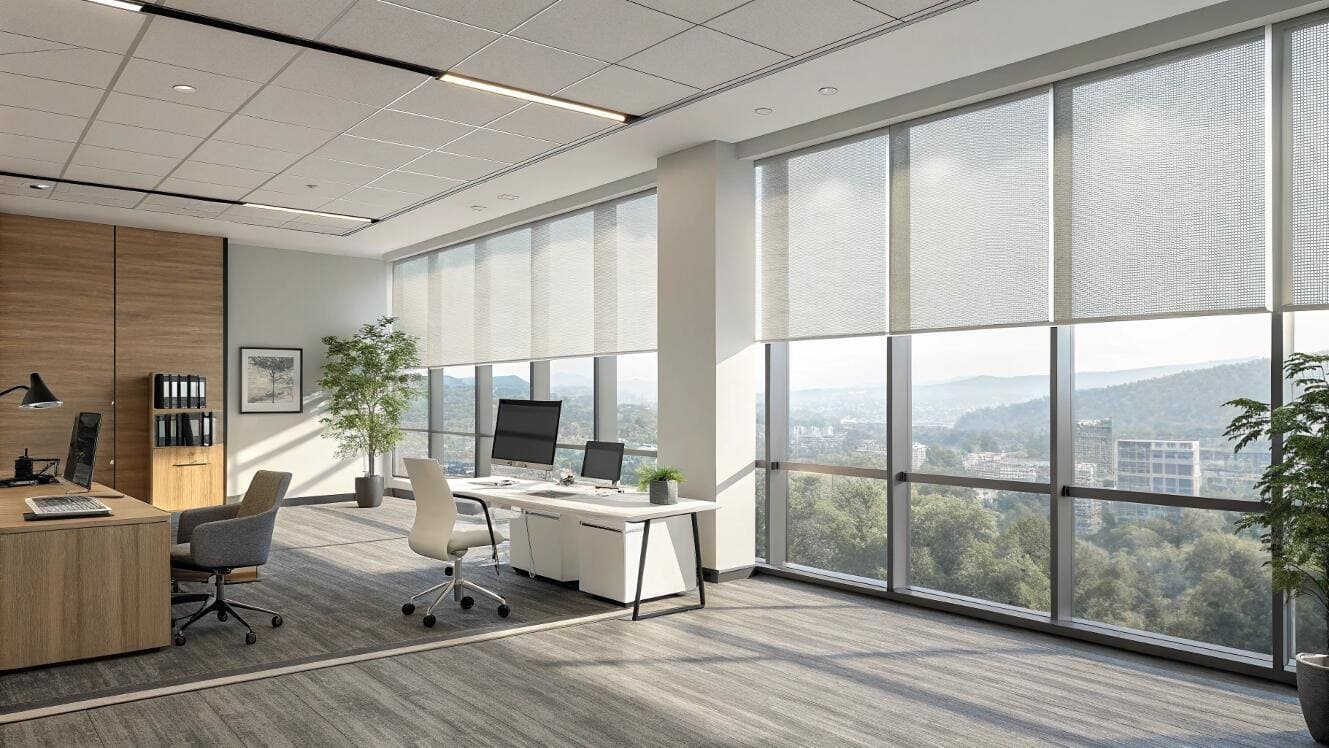
When I explain this to clients, I tell them to think of it like a screen door. The openness factor[^1] is just a precise measurement of the size of the holes in the weave. This percentage is directly related to "opacity[^4]," which is the opposite. Opacity measures how much light is blocked. So, a solar shade fabric with 5% openness has 95% opacity. It blocks 95% of the light coming through. This single number tells you a lot about how the shade will perform in a room. Understanding this basic concept is the first step to specifying the right fabric with confidence.
| Openness | Opacity | Key Characteristic |
|---|---|---|
| 1-2% | 98-99% | Maximum glare and UV control, but the view is limited. |
| 3-5% | 95-97% | The "sweet spot." Good view out with excellent glare reduction[^5]. |
| 10%+ | 90% or less | Excellent view out, but offers less heat and glare control. |
How do you choose the right solar shade openness?
You are trying to select a shade, but every room has different needs. A home office needs no glare, but a living room needs a nice view, and a media room needs darkness.
You should always choose the openness factor based on the room's primary function and its sun exposure. Match the percentage to the specific needs for privacy, glare control, and view-through[^6].
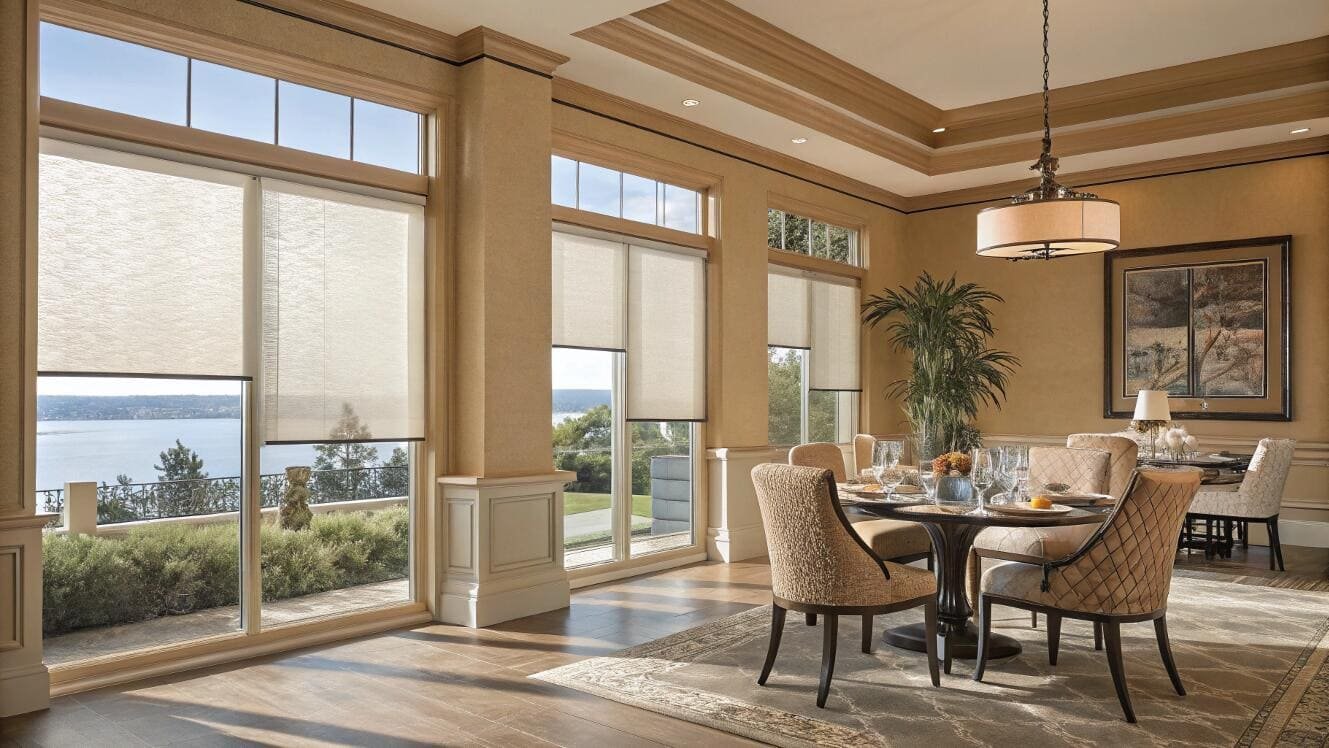
I guide designers through this choice by focusing on how the space will be used. There is no single "best" openness, only the best one for a particular application.
For Screen-Heavy Offices and Media Rooms
In an office where people stare at computer screens all day, or in a TV room, glare is the enemy. For these spaces, I always recommend a very tight weave with 1% to 3% openness. This blocks almost all glare, which reduces eye strain and increases comfort and productivity. It also provides fantastic UV protection for furniture and floors. The trade-off is a more limited view to the outside, but in these environments, glare control is the top priority.
For General Living Spaces
For most common areas like living rooms, kitchens, and dining rooms, a 3% to 5% openness is the perfect sweet spot. It strikes an ideal balance. It cuts down significantly on heat and glare, making the room comfortable even on a sunny day. At the same time, it preserves a clear and pleasant view of the outdoors. This is the most popular choice for both residential and commercial projects.
Does fabric colour change performance at the same openness?
You've decided on a 3% openness fabric for a project. You see it offered in both black and white. Does the color actually change how the shade works?
Yes, the fabric color has a huge impact on performance, even at the same openness. Dark colors provide a much clearer view and better glare control, while light colors reflect more heat.
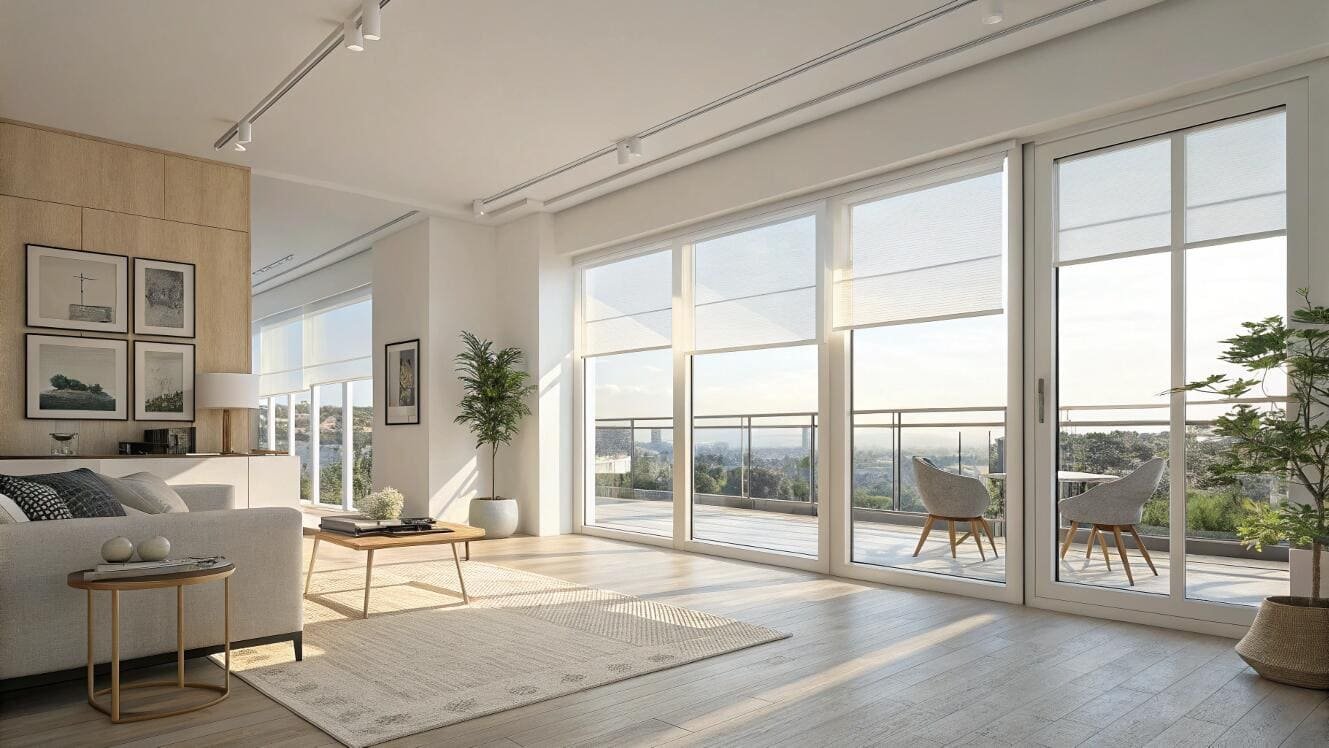
This is a point that surprises many designers. The physics is quite simple, and I always explain it this way:
Dark Colored Fabrics (Black, Charcoal, Bronze)
Dark colors work like sunglasses. They are excellent at absorbing light. This absorption cuts down on reflections and glare, which makes the view outside look sharper, clearer, and more vibrant. If preserving the view is the top priority, a dark-colored fabric is always the best choice. The downside is that they also absorb more solar heat[^7], which can make the room feel slightly warmer.
Light Colored Fabrics (White, Beige, Light Gray)
Light colors do the opposite; they reflect light. This makes them far superior at reflecting solar heat, which helps keep a room cooler and can lower energy costs. This reflected light also brightens the room with soft, diffused natural light. However, this same reflection can cause more glare and make the view to the outside appear hazy or washed out.
Can you see through solar shades at night?
Your client loves how their solar shades provide privacy during the day. But when night comes and they turn on their lights, they suddenly feel like they are on display for everyone outside.
Yes, people outside can easily see in through solar shades at night. The privacy effect reverses when it's dark outside and your interior lights are on. You can't see out, but everyone can see in.
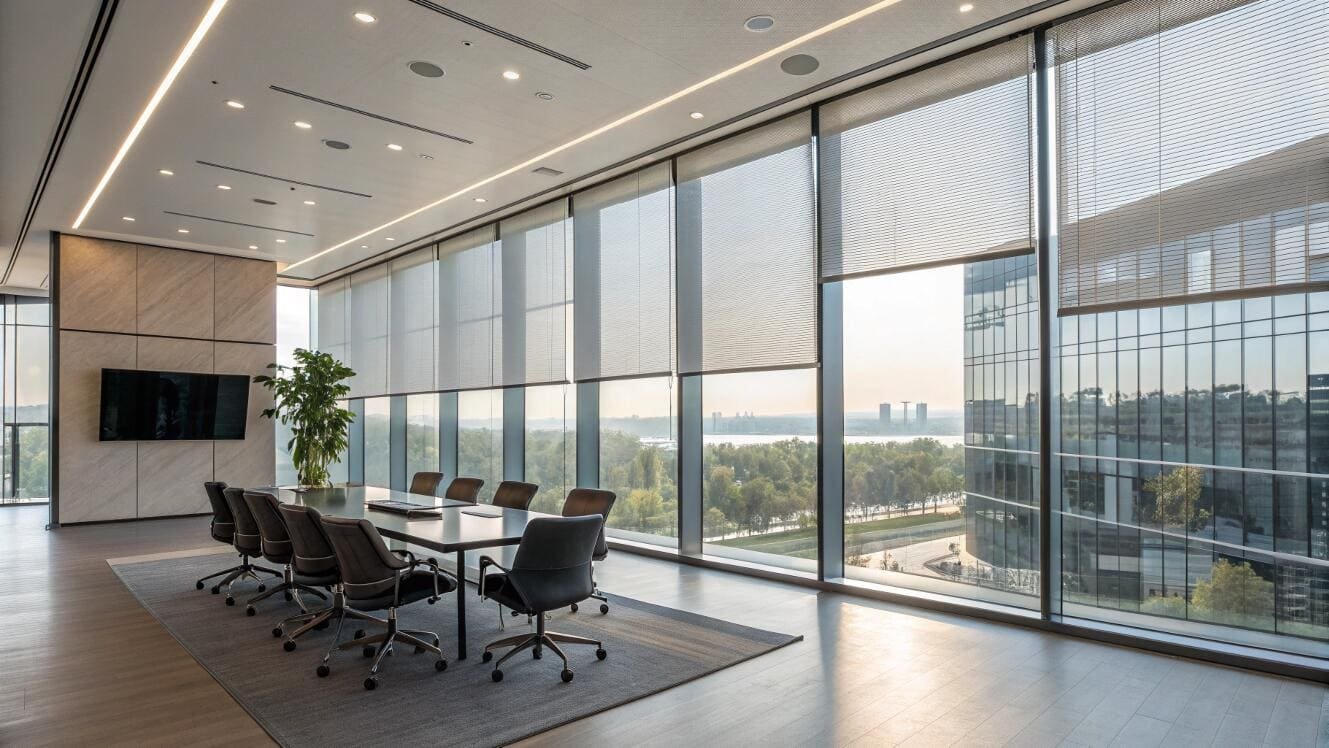
This "fishbowl effect" is the single biggest drawback of solar shades, and it’s crucial to manage your client's expectations. It happens because the shades reflect light from the brightest source. During the day, the sun is the brightest source, so the shades reflect sunlight and provide daytime privacy. At night, your indoor lamps become the brightest source. The shades reflect that light back into the room, making it hard for you to see out and easy for an outsider to see in.
This is true for all openness factors, even 1%. So, what's a project manager to do? The best solution I recommend for bedrooms, bathrooms, and any ground-floor windows is a Dual Roller Shade system[^8]. This system puts two shades in one window bracket: a solar shade for the day and a separate privacy or blackout shade for the night. The client gets a perfect view during the day and complete privacy when they need it.
Conclusion
Choosing the right openness factor comes down to balancing view, privacy, glare control, and heat reduction. By considering the room's function and fabric color, you can specify the perfect solar shade.
---
[^1]: Understanding the openness factor is crucial for selecting the right solar shade for glare control and view.
[^2]: Discover the privacy benefits of solar shades and how they work in different lighting conditions.
[^3]: Learn how solar shades can contribute to energy savings and a more sustainable home.
[^4]: Understanding opacity helps in choosing the right fabric for desired light control.
[^5]: Explore how glare reduction can enhance comfort and productivity in spaces with solar shades.
[^6]: Understanding view-through is essential for selecting shades that balance privacy and visibility.
[^7]: Learn about the effectiveness of solar shades in controlling solar heat in your home.
[^8]: Discover how a Dual Roller Shade system can provide both daytime views and nighttime privacy.
Partner with VelaBlinds for Your Next Project
Smart window treatments shouldn't be complicated. After working with 500+ distributors and contractors worldwide, I've streamlined the process to get you quality products, competitive pricing, and reliable support - every time.
Why project professionals choose VelaBlinds:
- ✅ Fast, Accurate Quotes - Detailed specs and pricing within 24 hours
- ✅ Transparent Pricing - No hidden fees, volume discounts clearly outlined
- ✅ Quality Assurance - Direct partnerships with certified OEM manufacturers
- ✅ Project Support - Dedicated account manager from quote to delivery
Start your next project:
📧 Quick Quote: Send your requirements to info@velablinds.com
📱 Direct Contact: WhatsApp +86 137 2012 8317
🌐 Browse Solutions: https://velablinds.com/
📁 Product Resources: Access spec sheets, catalogs & project files
Paul Chen, Founder
"I built VelaBlinds to solve the real challenges I faced as a project buyer - long lead times, unclear specs, and unreliable suppliers. Let's discuss how we can power your projects with smarter blinds."
Serving distributors and contractors across North America, Europe, and Australia since 2018.

